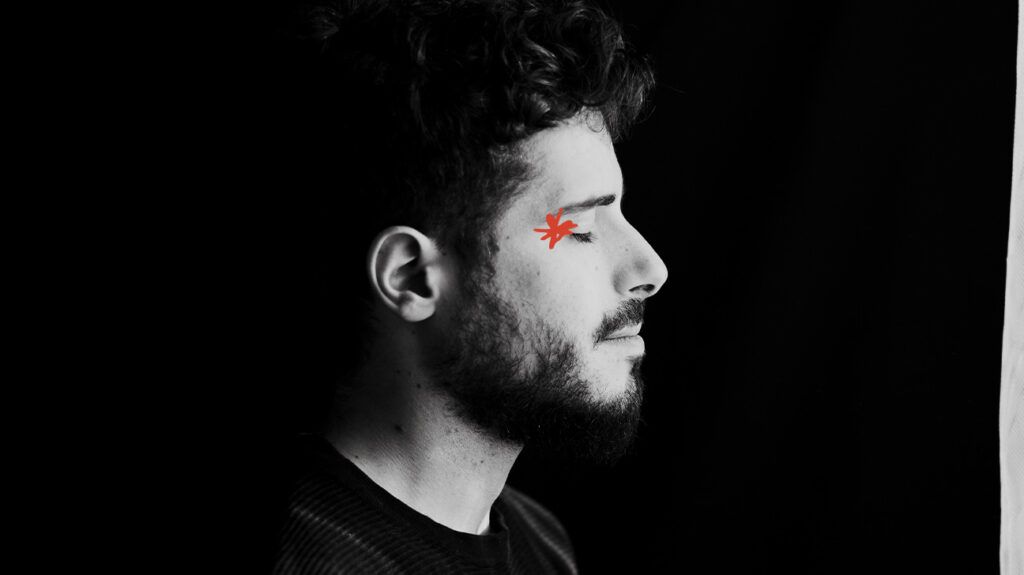Aqueous deficient dry eye (ADDE) is a type of dry eye disease (DED) in which the eyes do not produce enough tears.
People with ADDE may experience aches, sensations of dryness or burning in the eye, and sensitivity to light. Treatments aim to increase moisture in the eyes by supplementing natural tears, increasing tear production, or keeping tears in the eyes for longer.

According to a
ADDE affects the lacrimal glands of the eye. These glands sit inside each eyelid and on the whites of the eyes, continually producing tears to keep the eyes healthy. In ADDE, the lacrimal glands do not produce enough tears.
The review explains that ADDE consists of two subtypes: Sjögren’s and non-Sjögren’s. The subtype indicates whether ADDE is due to an autoimmune disease called Sjögren disease (SD), which can cause inflammation of the tear ducts.
According to the 2023 review, some potential causes of non-Sjögren’s ADDE include:
- inherited conditions, such as:
- alacrimia
- anhidortic ectodermal dysplasia
- immune-mediated diseases, such as:
- Stevens-Johnson syndrome
- mucous membrane pemphigoid
- graft-versus-host disease
- Other causes, such as:
- surgery
- trauma
- radiation
- medication side effects
The symptoms of ADDE are similar to those of EDE, and
- a sensation of dryness or burning in the eye
- the sensation of a foreign body in the eye
- a boring or aching pain in the eye
- sensitivity to light
In the case of Sjögren’s ADDE, a person may also experience symptoms of SD. According to the American College of Rheumatology (ACR), these may include:
- dry mouth
- dryness of the nasal passages and throat
- difficulty swallowing due to a lack of saliva
- heartburn
- swelling of the glands in the face or neck
- dry skin
- skin rashes
- vaginal dryness
- joint and muscle pain
- fatigue
Dry eye can be difficult to diagnose, but diagnosis typically has three stages:
- a medical history evaluation
- observation and examination
- diagnostic tests, such as a slit lamp exam and Schirmer’s test
According to the American Optometric Association (AOA), ADDE treatments aim to:
- supplement natural tears
- keep natural tears in the eyes for longer
- increase tear production
Doctors may recommend the following treatments for ADDE:
- Artificial tears: These eye drops help to moisten the eye. Doctors may recommend them for mild ADDE.
- Anti-inflammatory agents: These medications include topical steroids and Restatin, a topical anti-inflammatory. Doctors may recommend these medications for moderate to severe ADDE.
- Punctal plugs: A doctor inserts these tiny devices into the tear ducts to help prevent tear drainage. This helps moisten the surface of the eye. Doctors may recommend punctal plugs for moderate to severe ADDE.
Learn about vitamins for dry eyes.
ADDE and other types of dry eye may not always be preventable. However, the
- Avoiding smoke, wind, and air conditioning.
- Using a humidifier in the home to help moisten indoor air.
- Limiting screen time and taking regular breaks when using screens.
- Wearing wraparound sunglasses when outdoors.
- Drinking plenty of water to prevent dehydration.
- Getting 7 to 8 hours of sleep each night.
Learn about treating dry eyes naturally.
Eye health resources
Visit our dedicated hub for more research-backed information and in-depth resources on eye health.
According to the United Kingdom’s National Health Service (NHS), a person should contact a doctor or optician if they experience any of the following:
- persistent dry eye following home treatment for a few weeks
- any change to the shape of the eyelids
- eye pain or redness
The NHS also recommends that a person receives emergency medical treatment for any of the following symptoms:
- changes to vision, such as:
- wavy lines
- flashes
- vision loss
- pain when looking at light
- eye redness combined with a severe headache and nausea
- dark red eye discoloration
- a foreign object stuck in the eye
- an eye injury, such as a pierced eyeball
The outlook for ADDE depends on the underlying cause of the condition, which may influence the speed at which it progresses.
According to the AOA, dry eye diseases are often chronic, meaning they may require long-term treatment or management.
A person can talk with a doctor or ophthalmologist about their individual treatment plan and outlook for ADDE.
What is the most common type of dry eye?
Evaporative dry eye is the most common type, accounting for
How can you differentiate between aqueous-deficient and evaporative dry eye?
Aqueous deficient dry eye affects the tear-producing glands of the eye, whereas EDE affects the oil-producing glands.
According to the AAO, there is no standard test to differentiate ADDE from EDE. In any case, the treatments are often the same.
Is there a vitamin deficiency that causes dry eyes?
Scientists have not yet linked dry eye to any particular vitamin deficiency. No scientific evidence supports the popular theory that omega-3 supplements can help treat dry eye.
Aqueous deficient dry eye (ADDE) is one of three types of dry eye disease. In ADDE, the lacrimal glands inside the eyes do not produce enough tears to maintain eye health. This can cause symptoms such as aches, a sensation of dryness or burning in the eye, and sensitivity to light.
Dry eye treatments aim to supplement natural tears, increase tear production, or keep tears in the eyes longer. People may also benefit from limiting screen time, using a humidifier in the home, and wearing wraparound sunglasses outdoors.
Dry eye is often a chronic issue, requiring long-term treatment and management. A person can talk with a doctor or ophthalmologist for individual advice regarding their treatment plan and outlook.


